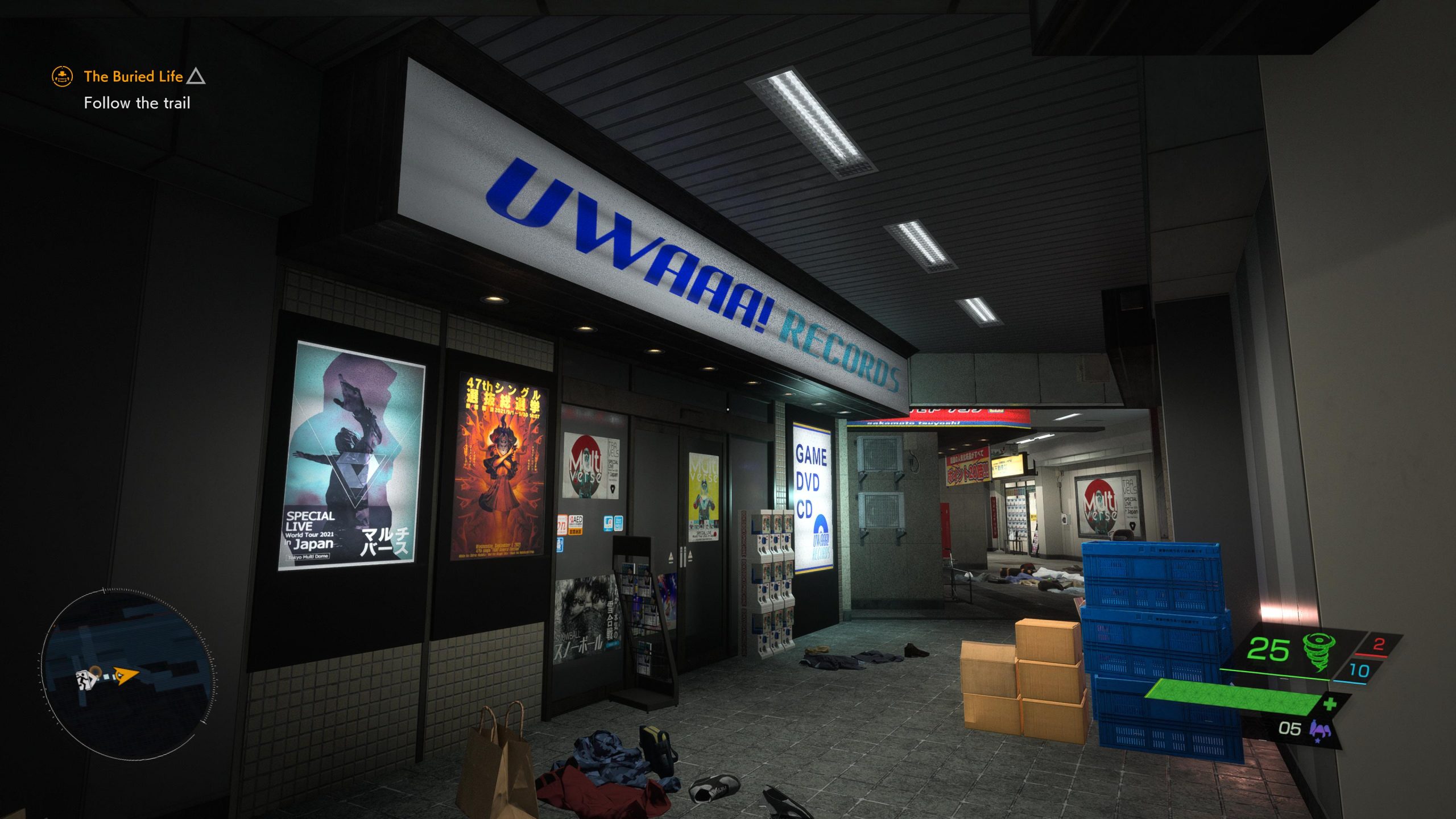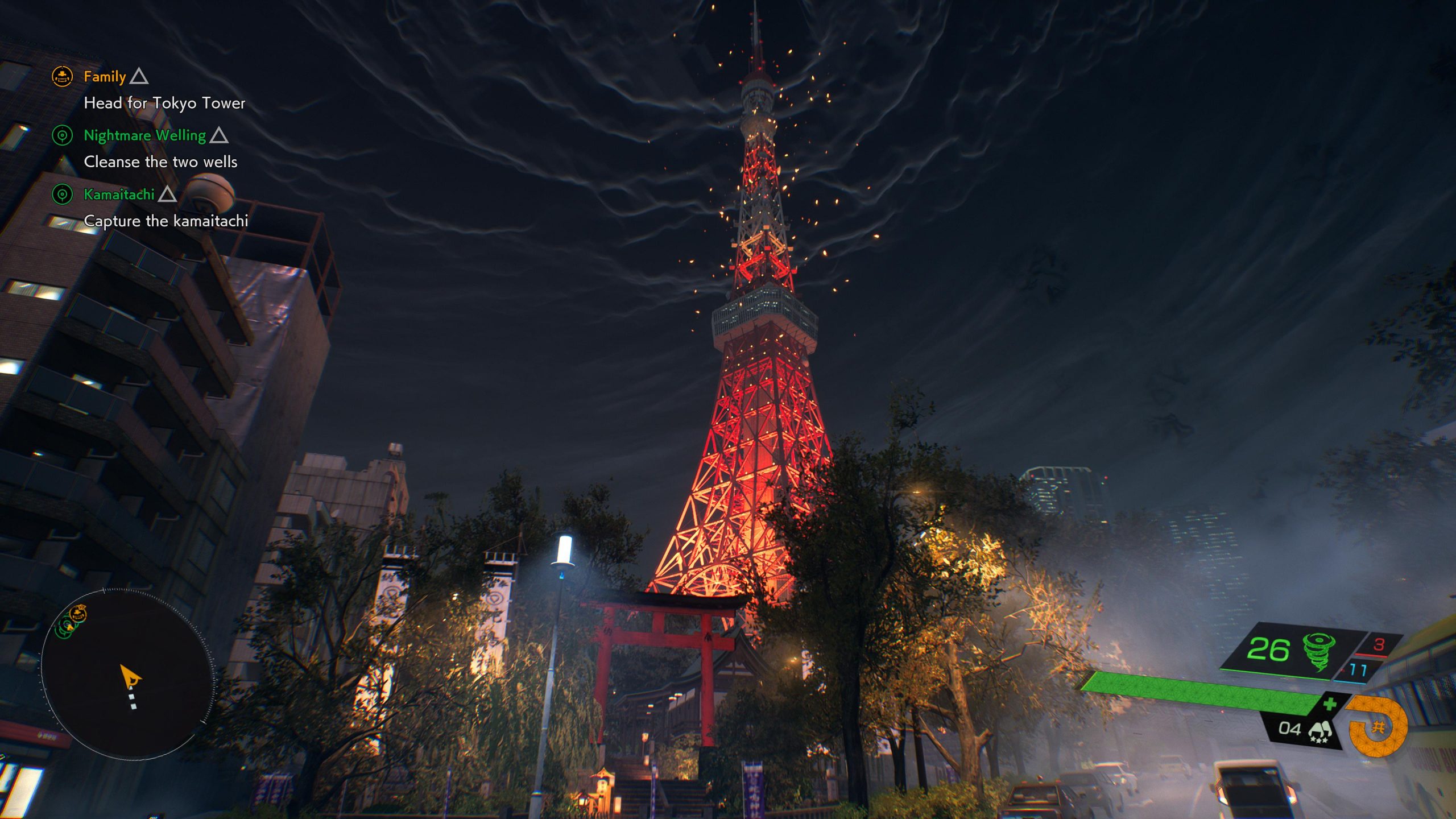There’s a song by Puffy AmiYumi called Planet Tokyo. I mention this not because it has anything to do with the game, but every time I see the title “Ghostwire Tokyo” I read it in the same tune. Yes, I know you probably have no idea what I’m on about.
I went into the game itself pretty blind. I’d glanced over a couple of reviews and read some game-content-free comments on how good it was, but I think I was expecting something a little different to what I got. The initial Yakuza vibe, of Tokyo streets and neon signs and tiny bars and vending machines everywhere wore off quickly when it was clear this was more more explorey than that, much less person-filled, and with combat closer to something approaching Bioshock than a first person shooter or a fighty punchmans game.

The story, with hopefully spoiler avoidance, centres around Akito, a man who is seemingly killed at the same time as almost everyone else in Tokyo has been raptured and replaced with ghosts, spirits and yōkai. Akito is then posessed by KK, the ghost of an ex-police officer (and not the dog from Animal Crossing) who imbues you with spirit powers. Most of the other spirits are literally just hanging around waiting for you to “save” them by sucking them into paper dolls which you then release into phoneboxes because, well, it’s never made completely clear. Much of the game is, or at least, is if you’re going for 100% completion, collecting these souls and in some ways doing so feels a bit like the orb collection in Crackdown, but the actual story involves almost none of this.
Instead, you’re tasked with reaching torii gates (the big red arches in front of Japanese shrines and temples) to “cleanse” them. This clears out the nearby poisonous fog and allows you to reach additional areas of the map. There are various fog-filled places on this map you go to as part of the plot, so clearing the fog is essential to get there, but if you’re just following the story you’ll only have unlocked about 25% of the city by the time you reach the credits, so fog clearance is another expansive extra-curricular activity should you want it.

On your travels, you’ll come across baddies in the form of headless schoolkids, salarymen with umbrellas, banshees, and other zombie-like creatures who you can dispatch with your unlockable elemental powers of wind (the most effective), water (which seems to do literally nothing) and fire (which does a lot of damage to a wide area but your “ammo” is very limited). “Shoot” them enough, and they expose their “core” and you can lasso this with your ghost wire spirit rope thing, yank it out, and they die. Or die more. Or again? I don’t know how it works. There are also boss fights, most of which you’re warped to some sort of broken dreamworld which acts as a way of drastically reducing the game’s required polygon output (I assume) but play out a little differently to normal fights. They reminded me of boss battles in some of the older Lego games, actually.
As pretty much everyone has vacated Tokyo mysteriously, leaving behind clothes, phones and shopping bags, the streets are eerily empty (aside from the spirits). Very little street furniture is interactive, and most shops, stairs, doors and so on are inaccessible in that Shenmue type way that reminds you it’s a video game. It means it’s a bit spooky, but it also feels a bit unfinished. Combat is also a bit vague but repetitive. However, it’s still fun. The plot unravels some mysteries, there’s some great sequences where reality goes sideways, and there are loads of bizarre side-missions where you catch yōkai or feed dogs or collect toys and artworks and stuff to sell to floating cats that now run the shops in the absence of people. I loved all the Japanese and Shintō lore and imagery, and although just a façade of a real place, Ghostwire Tokyo is wonderful to wander round – surprise attacks by fat men with brollies notwithstanding – and a fascinating, if a little shallow, game.


